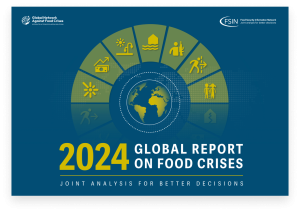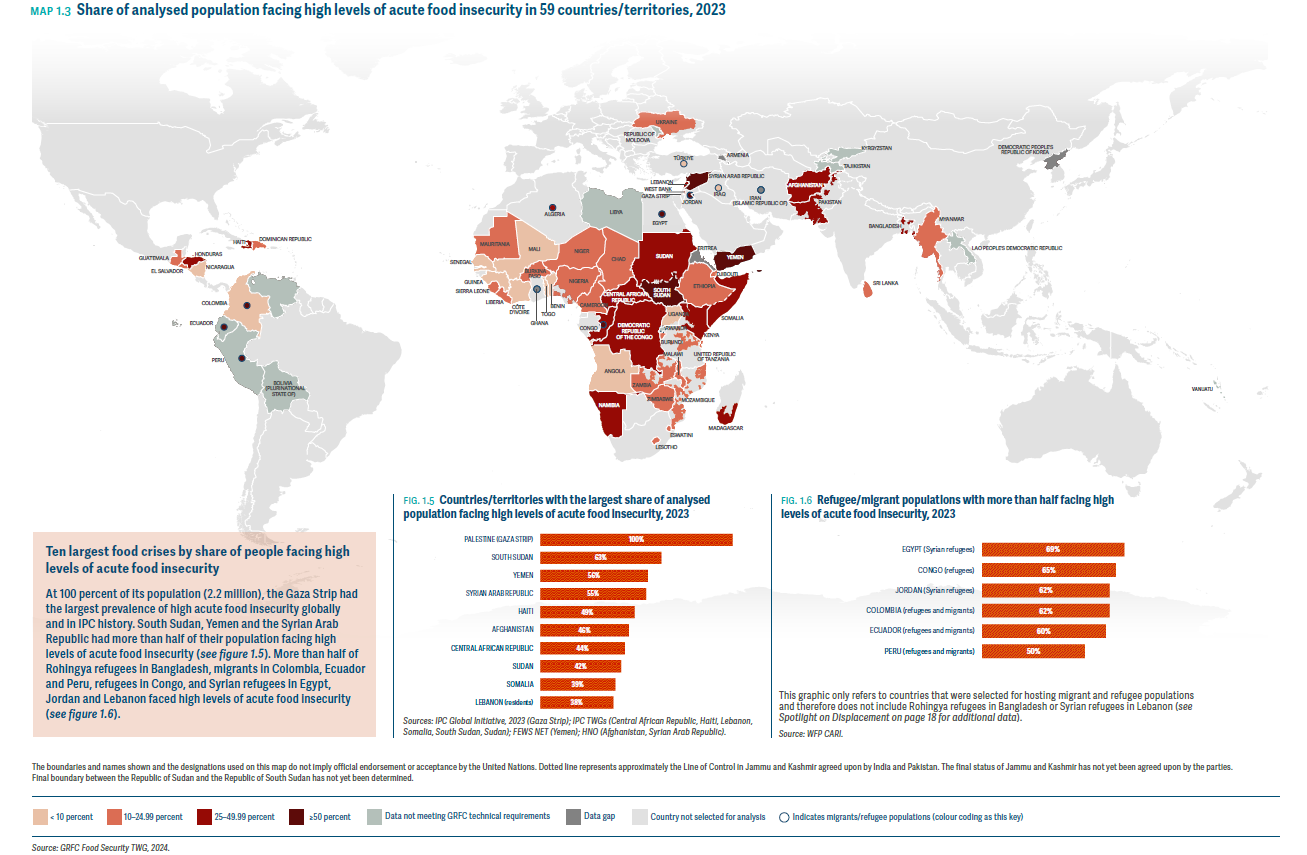This section presents information-and decision-support tools to strengthen the ability of policymakers, food policy experts, and researchers to respond quickly to dynamic developments in the world food system.
Here you can find the latest information on current food crises through the Global Report on Food Crises, information from across Early Warning Systems, Vulnerability to Global Market Shocks V.2: Price Shocks to Major Staple Foods, and the Excessive Food Price Variability tool where you can track daily updates in food price volatility.
Global Report on Food Crisis

Click here to access the Global Report on Food Crises page in the Food Security Portal.
In 2023, 281.6 million people or 21.5 percent of the analysed population faced high levels of acute food insecurity in 59 food-crisis countries/ territories. Although the overall share of the analysed population facing high levels of acute food insecurity was marginally lower than in 2022, it remained higher than pre-COVID-19 levels (see figure 1). The number of people facing these conditions increased by 24 million since 2022. Greater analysis coverage, as well as deteriorating acute food insecurity in some countries/territories outweighing improvements in others, underpin the rising numbers. This fifth consecutive year of growing numbers of people facing high levels of acute food insecurity confirms the enormity of the challenge of achieving the goal of ending hunger by 2030. Food crises escalated alarmingly in conflict hotspots in 2023 – notably in Palestine (Gaza Strip) and the Sudan. The population analysed has risen each year since 2020. Increased coverage between 2022 and 2023 identified 17.5 million additional acutely food-insecure people in need of urgent assistance. In countries with comparable data between 2022 and 2023, acute food insecurity deteriorated in 12 of them where 13.5 million more people needed urgent food and livelihood assistance. Two-thirds of the additional people were in the Sudan. Meanwhile, food security improved in 17 countries resulting in 7.2 million fewer people facing high levels of acute food insecurity. The GRFC has identified 36 protracted food crises (i.e. in all eight editions of the report). Nineteen of these were major food crises that have accounted for up to 80 percent of the total population facing high levels of acute food insecurity in each edition. In these 19 countries, the share of the analysed population experiencing high levels of acute food insecurity increased from 17 percent in 2016 to 25 percent in 2021 and has remained at the same level since.
To download the report:
FSIN and Global Network Against Food Crises. 2024. Global Report on Food Crises 2024
Excessive Food Price Variability Early Warning System
Excessive food price volatility (variability) affects farmers, traders, processors and consumers – and it threatens food security. In the aftermath of the 2007-2008 food price crisis and post-crisis commodity price volatility, the Food Security Portal developed the Excessive Food Price Variability Early Warning System, which identifies periods of excessive price variability (i.e. price variability that exceeds a pre-established threshold). The instrument serves as an early warning system for unusual periods of excessive price variability.
Early Warning Hub
Reliable, timely information on food production and availability, food prices, and hunger levels are key to helping decision makers anticipate and respond to food crises and their drivers. Early warning systems exist to collect, analyze, and disseminate such information.
The Early Warning Hub brings together in one place the alerts and other information from across several Early Warning Systems.
